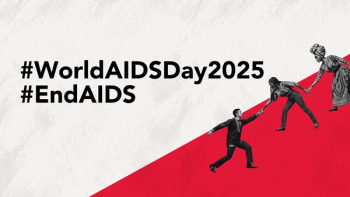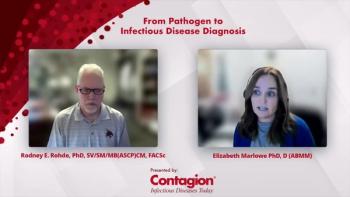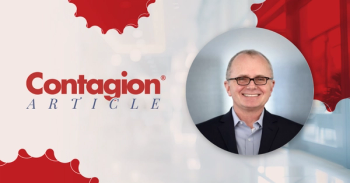
Peggy Lillis Foundation Hosts 4th National C diff Summit and Lobby Day
Contagion® caught up with Christian Lillis, executive director of the Peggy Lillis Foundation, to hear about the organization’s recent efforts, what obstacles it’s facing, and how providers can help.
The Peggy Lillis Foundation brought together 100 leaders from public health, medicine, and grassroots organizations this week in Washington, DC, for its 4th National C diff Summit and Lobby Day.
The eponymous organization was founded after the 2010 death of a 56-year-old kindergarten teacher from Brooklyn, New York, who died from complications of a Clostridium difficile infection. The Peggy Lillis Foundation (PLF) now works to raise awareness about antimicrobial resistance, to educate the public, and to shape policy surrounding health care-associated infections.
Co-founded and run by Peggy’s sons, Christian and Liam, PLF hosted its annual Summit on April 8, 2019, followed by Lobby Day on April 9. There, the PLF Advocates Council met with members of Congress to enlist their support in combatting C diff.
Contagion® caught up with Christian Lillis, executive director of the Peggy Lillis Foundation, to hear about the organization’s recent efforts, what obstacles it’s facing, and how providers can help.
Contagion®: What are the biggest challenges in the fight against C diff infection?
Christian Lillis: From our perspective as patient advocates, our biggest challenges are low public awareness, antimicrobial overuse, the patchwork public reporting system at the federal and state levels, and complacency on the part of health care leadership that permits poor sanitation practices and low hand hygiene compliance. In terms of awareness, less than one third of Americans have heard of C diff, yet it’s among the most common health care-associated infection. Compare that to Ebola, which is incredibly rare in the United States, but of which about 80% of Americans are aware.
Because C diff infections are largely precipitated by taking an antibiotic, our health care systems’ overuse and misuse of these drugs is a huge driver of the epidemic. We are seeing some good progress in inpatient stewardship programs, but outpatient prescribing remains far too high. Similarly, while the [US] Centers for Disease Control and Prevention, Centers for Medicare and Medicaid, and state health departments are doing some C diff reporting, it’s not enough for us to understand the infection’s true burden. Lastly, in the nearly 9 years since losing my mother, Peggy, to a C diff infection, there has been some progress in sanitation and hygiene, but health care leadership still fails to prioritize it. It is often viewed as a “cost center” rather than something that minimizes costs by preventing infections.
Environmental services are frequently outsourced to poorly trained staff, who are not well-compensated. This misses a significant opportunity to have EVS staff see themselves as part of the infection prevention team, who play a role in protecting patients and reducing overall costs. Though physicians and nurses are better compensated and trained, their poor hand hygiene is a known vector for spreading infections. Patients should be able to expect professionals to properly clean their hands between patients, but studies show that compliance is around 50%. This is largely a lack of leadership not providing the time and resources to properly engage in hand hygiene. If a nurse has 30 patients on her floor, she doesn’t have time to properly wash her hands between each one. Often the blame gets put on the individual health care worker, but it’s really a systemic problem.
Contagion®: What are the most urgent priorities right now when it comes to reducing rates of C diff infection?
Lillis: For us, it all comes down to public awareness and engagement. A challenge with infectious diseases, as opposed to chronic ones, is that they are mostly acute. People either get well or they die. If they have a mild C diff infection, they generally just go about their lives. Of course, when someone perishes from an infection, they’re no longer present to raise awareness or advocate for better policies. We would like to see federal and state agencies taking an active role in raising awareness of preventable infections. Tell the public how they can take care to decrease their risk. Because it’s impossible for us to mitigate the risks of an infection we don’t know exists. Similarly, if the public is unaware of the human and financial costs of C diff and other resistant organisms, they can’t ask their government to take more decisive action to combat the threat.
Contagion®: What is the most important message for health care providers who are on the front-lines of C diff treatment?
Lillis: C diff and other antibiotic-resistant infections are largely preventable if we all do our part, and work together: health care workers, policymakers, and patients and caregivers. We need prescribers to be much more judicious in their use of antibiotics. We need real investment in terminal cleaning that ensures people responsible for that work are well-trained and compensated. We also need health care workers to be open to patients and caregivers having greater participation in our care.
Contagion®: What do you want Congress to know about C diff infection?
Lillis: We are losing the battle against antibiotic-resistant infections. The current pipeline for antibiotics is woefully inadequate to keep pace with the growing resistance of organisms. Although the federal government has taken some steps (e.g. passing the Generating Antibiotic Incentives Now Act in in 2012 and adopting the National Action Plan to Combat Antibiotic Resistant Bacteria in 2014), it has been insufficient to deal with this growing threat. In addition to the daily harm caused by C diff and antibiotic-resistant infections, growing resistance threatens the very underpinning of modern medicine. Without antibiotics, we cannot perform surgeries safely or offer chemotherapy. We also need to invest in our public health infrastructure so we can have current and more accurate infection reporting. I was shocked to learn that in our social media age, many infection reports are being done by pen and paper. If we can get Instagram to work on our phones, we can build a surveillance infrastructure that tracks these dangerous infections. Although the efforts of federal and local agencies are commendable, they remain under-funded and resourced relative to the enormous threats they are responsible for monitoring and combating.
Contagion®: Why is it so important to have a coalition of people from different sectors (patients, advocates, health care providers, nonprofits, caregivers, etc.) to address this problem?
Lillis: Building a solid and motivated coalition of like-minded health officials, clinicians, laboratorians, policymakers, patients, and leaders is important because each individual and organization brings a unique perspective and experience to combat antimicrobial resistance (AMR) from all sides. Together, as a united front, they share the same goal to address the human health impact of AMR, which is linked to C diff. A broad-reaching and concerted effort like the
Newsletter
Stay ahead of emerging infectious disease threats with expert insights and breaking research. Subscribe now to get updates delivered straight to your inbox.

















































































































































































































































































